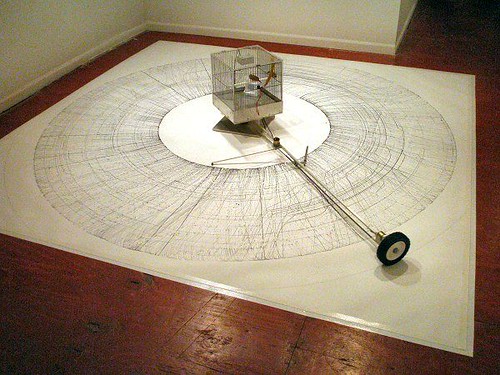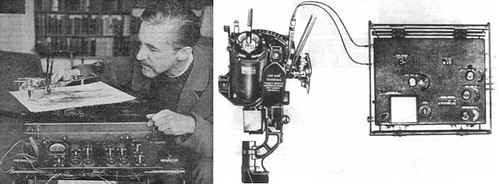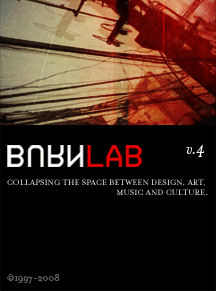I started a research project on mechanical theatre, which [as these things go] quickly digressed into a nearly infinite number of tangents. One of the most interesting digressions led to a number of incredible drawing machines I hadn't seen before. Here are a couple:
David Shingler - Bird Drawing Machine [2008?]
Movement of the stylus is controlled by the chirps of a pair of zebra finches. I was able to find precious little additional info about this artist, unfortunately. The image above and words below come from this blog.
The kinetic sculpture above (second foto in the placeholder entry last Friday) is a "Bird Drawing Machine", which consists of a rotating arm on which is mounted a birdcage that contains two tiny birds. As the arm rotates, a stylus shoots out from time to time down and back up parallel to the arm, forming ellipses. I liked this, and when what appeared to be the artist, whom I'd seen crouching by the paper(?) on the floor, was free, I asked if this was his, and which brother he is. It was indeed his, and he was David, a slite young man with lots of curly, dark-blond hair and, I think, blue eyes. He explained that the stylus moves into action when the birds chirp, and thus the birds effectively draw the lines (actively when they chirp; passively, when their silence leaves the stylus making circles where it came to rest alongside the rotating arm). Lisa realized then that the wire leading from the birdcage must be connected to a microphone to pick up the bird's chirps. And so it is.


above: Desmond Paul Henry with one his drawing machines, a WWII-era bombsight computer, and one of his machine-generated drawings
Desmond Paul Henry [*link fixed] was a British pioneer of Computer Art/Graphics who during the 1960's constructed a series of three mechanical drawing machines from analogue bombsight computers.
From Wikipedia:
Henry’s drawing machines of the 1960s represented a remarkable innovation in the field of Art and Technology for a variety of reasons. Firstly, the bombsight analogue computer provided not only the inspiration but also the main tool for producing highly original visual effects (O’Hanrahan 2005). Secondly, his machines’ reliance on a mechanics of chance, as opposed to pre-determined computer programmes, ensured the unrepeatable and unique quality of his infinitely varied machine-generated effects or ‘mechanical fractals’ (O'Hanrahan 2005). Thirdly, the spontaneous, interactive potential of his drawing machines’ modus operandi pre-empted by some twenty years this particular aspect of later computer graphic manipulation software (ibid).
Finally, Henry was never artistically inspired by the graphic potential of the modern digital computer (ibid). He much preferred the direct interaction afforded by the clearly visible interconnecting mechanical components of the earlier analogue computer and as a consequence of his drawing machines also. This was in stark contrast to the invisible and indirect workings of the later digital computer: ‘the mechanical analogue computer, was a work of art in itself, involving a most beautiful arrangement of gears, belts, cams differentials and so on- it still retained in its working a visual attractiveness which has now vanished in the modern electronic counterpart; ….. I enjoyed seeing the machine work…’ (Henry, 1972).
In view of these considerations, Henry’s drawing machines may be said to not only reflect the early experimental phase of Computer Art and Computer Graphics but to also provide an important artistic and technological link between two distinct Ages of the twentieth century: the earlier Mechanical/Industrial Age and the later Electronic/Digital Age (O’Hanrahan 2005).

No comments:
Post a Comment